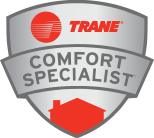If you’re looking for an effective alternative to a traditional air conditioning system for your home, an evaporative cooler is a great option to investigate. This is not new technology by any means, but evaporative coolers are rapidly gaining popularity these days for several reasons. While these aren’t the perfect solution for every home, they’re definitely worth taking a closer look at if you’re interested in cutting your cooling costs.
Here are some of the benefits of evaporative coolers:
• Energy Efficiency – Because they cool air through evaporation, evaporative coolers use much less energy than traditional air conditioners to achieve the same results. This will take a big chunk off your energy bills each month.
• Competitive Pricing – You can buy just about any size evaporative cooler for less than a comparably sized air conditioner. And just like air conditioners, evaporative coolers are available in a wide variety of sizes so you should have no trouble finding one to fit the space you need cooled.
• Easy Installation – Whether you opt for a smaller window unit or a larger centralized one, evaporative coolers are at least as easy to install as air conditioners if not more so. The smaller units are made to fit into windows just like a comparably sized air conditioner, and central evaporative coolers operate through the same air ducts as your central heating system. They’re easy to integrate into your home and often less labor intensive than a central air conditioner to install.
• Complete Air Circulation – With an air conditioner, you need to have your windows and doors sealed up tight to keep the cooled air from escaping. But because evaporative coolers work by cooling outdoor air as they bring it into your home, they require other doors and windows in the house to be open to function efficiently. As the evaporative cooler blows cooled air into the house, it pushes hotter air out, leaving you with a comfortable environment and a constant supply of fresh air.
Of course, evaporative coolers aren’t the right choice for every situation. They work extremely well in areas with hot, dry climates, but they have a harder time cooling your home when the air outside is hot and humid. They also require water to keep their cooling pads moist, and if you live in an area where drought conditions are common, it may be difficult to keep up with their water consumption.


